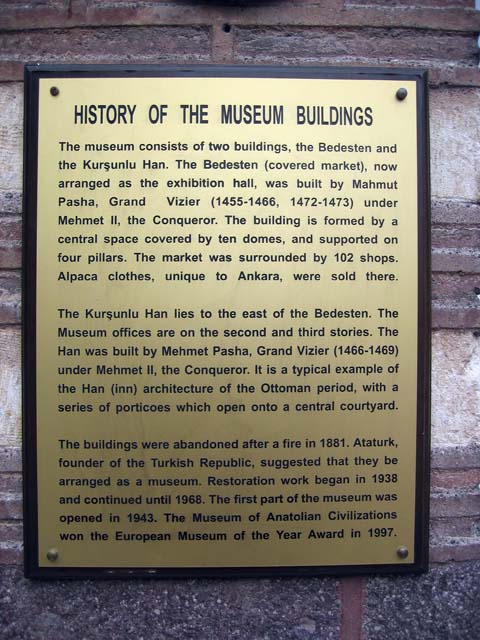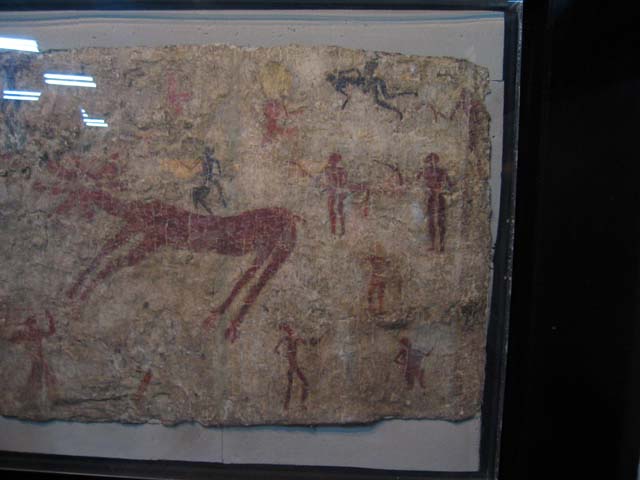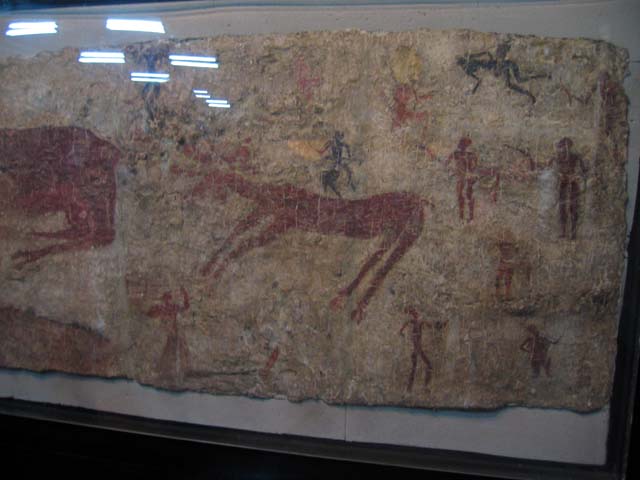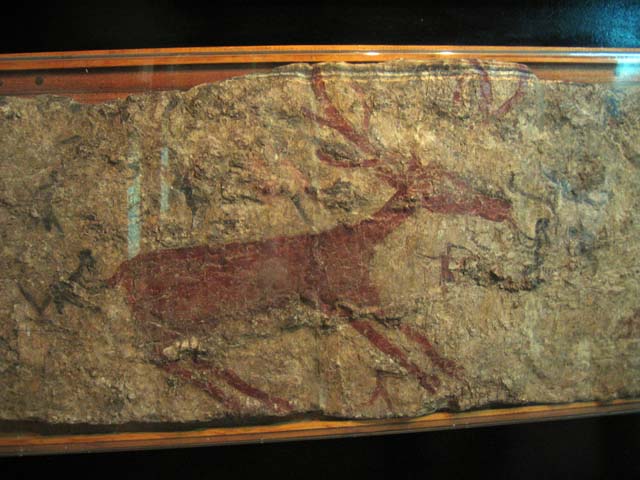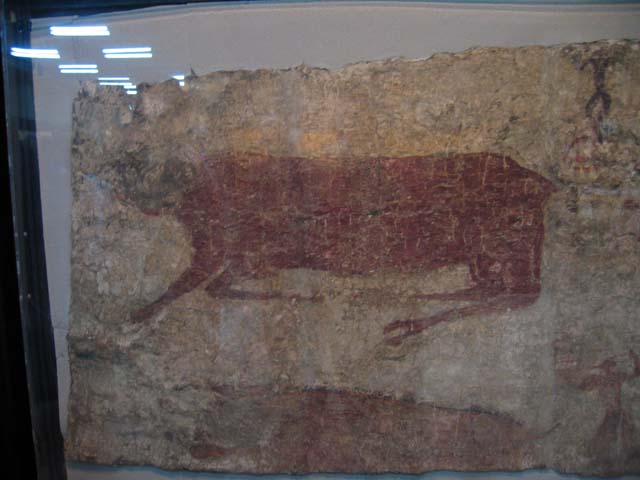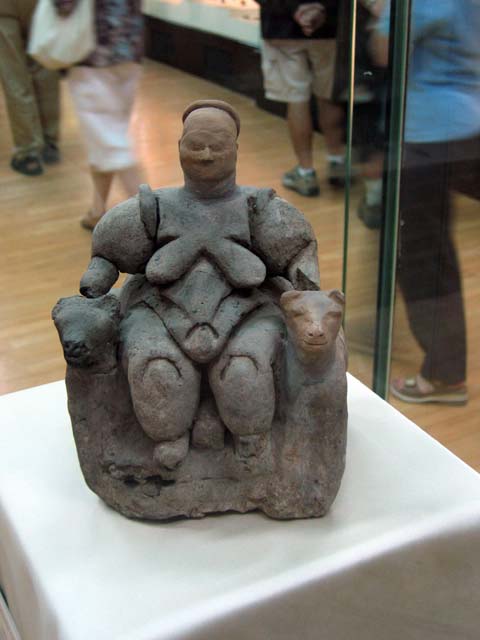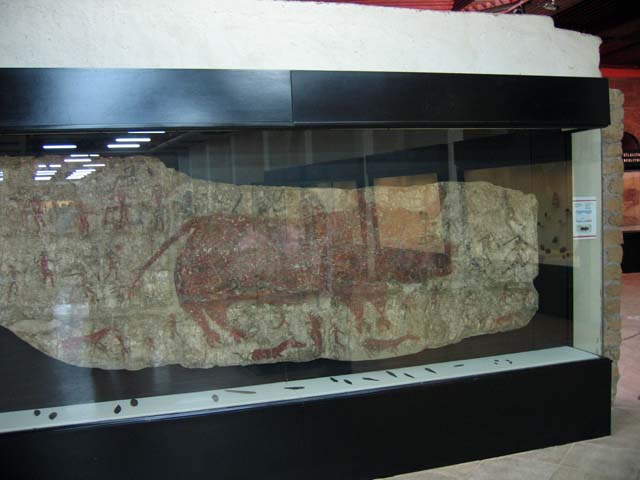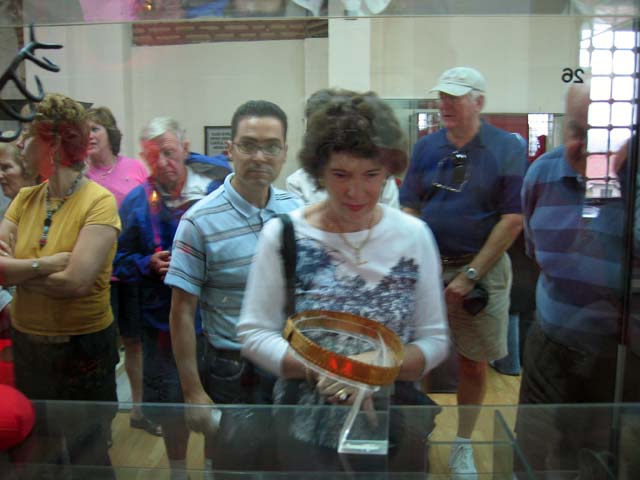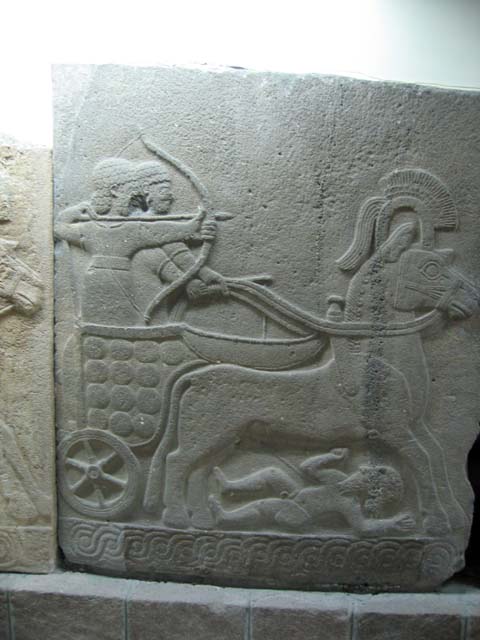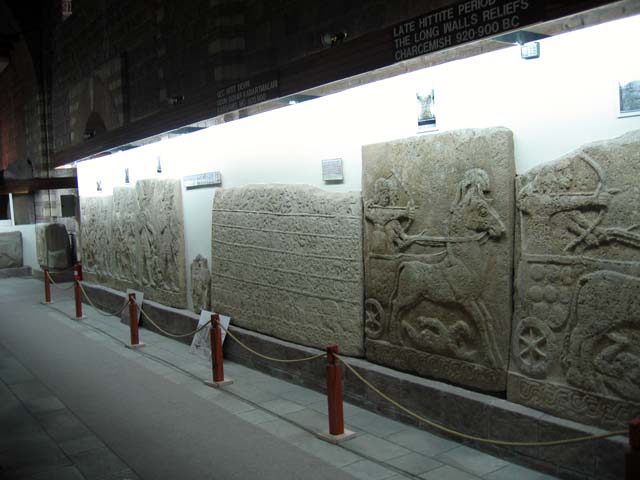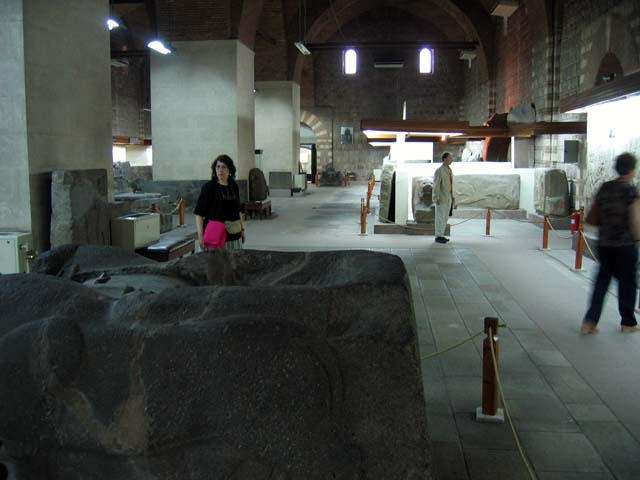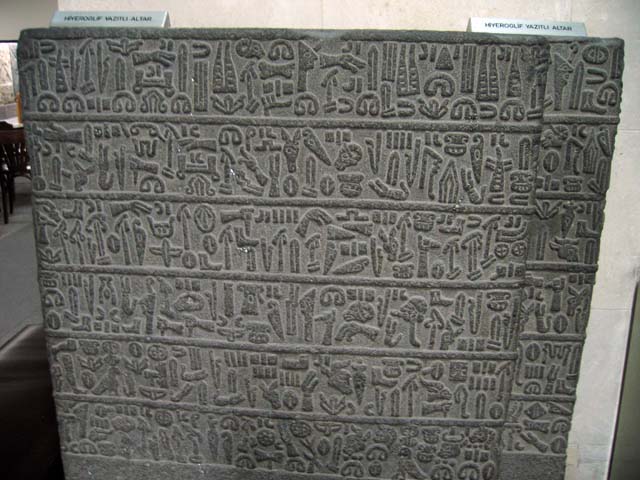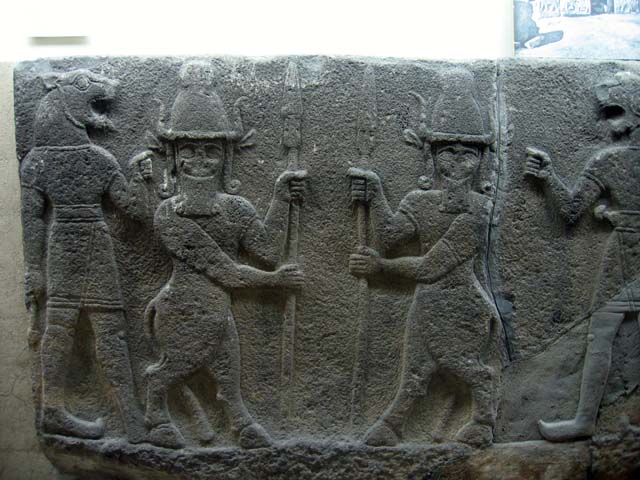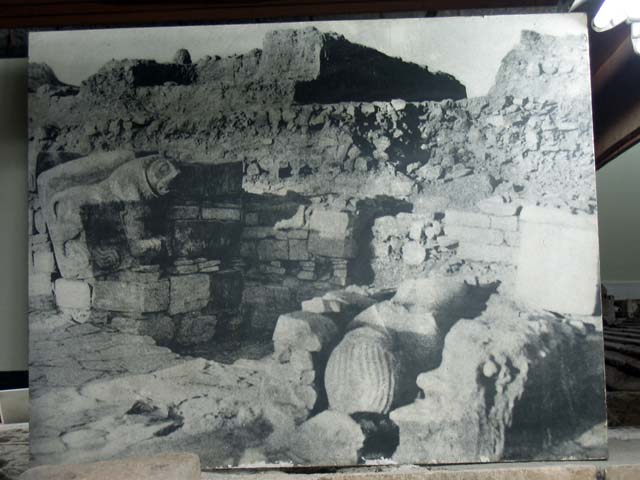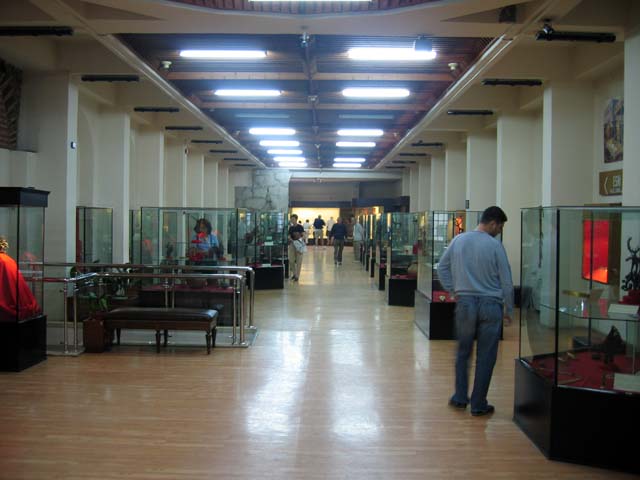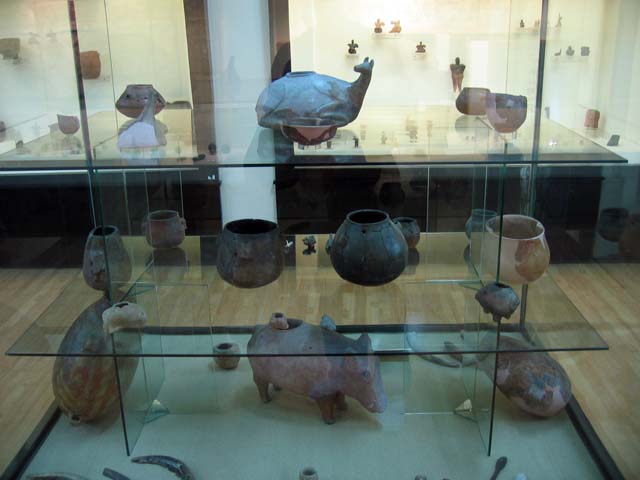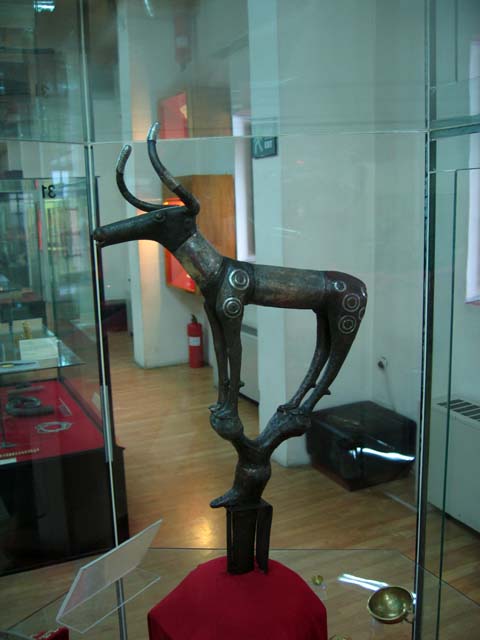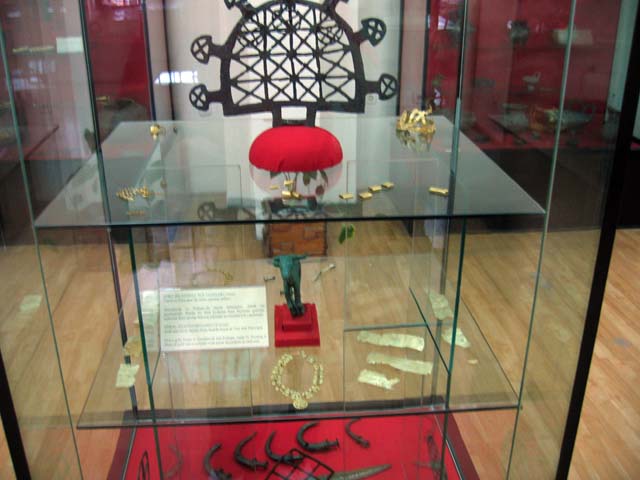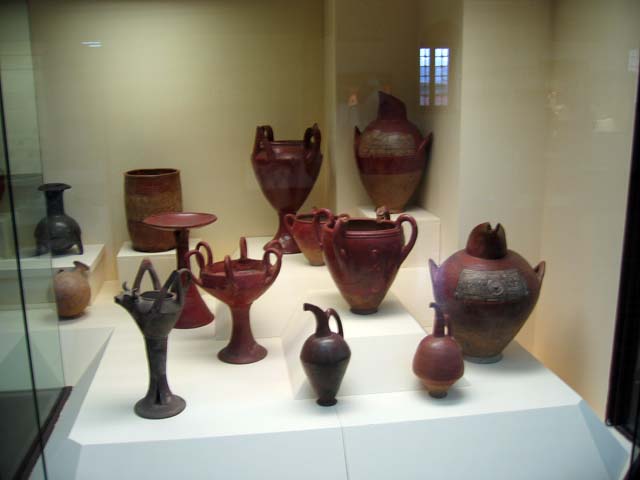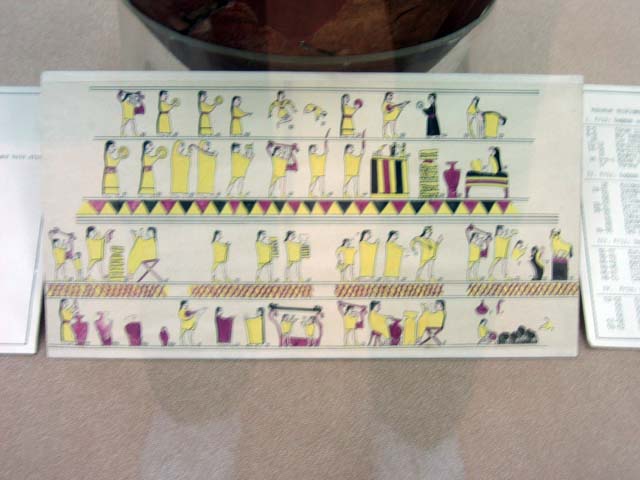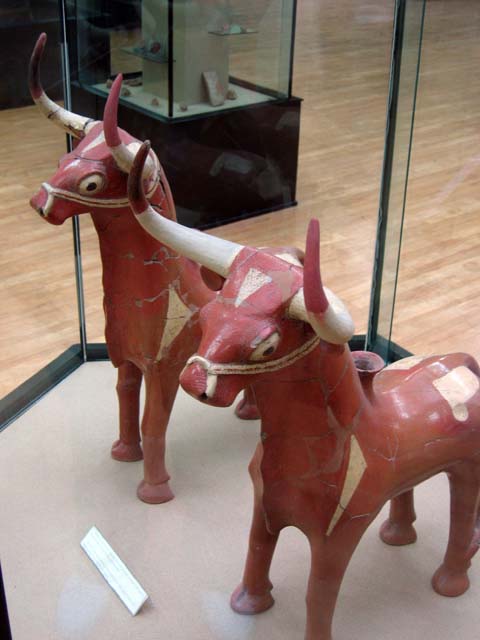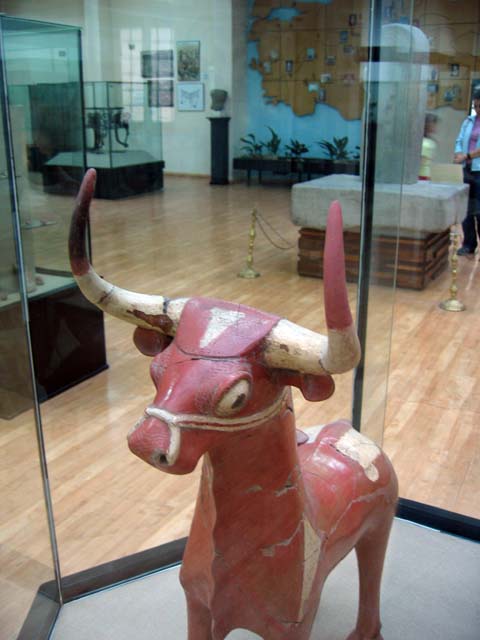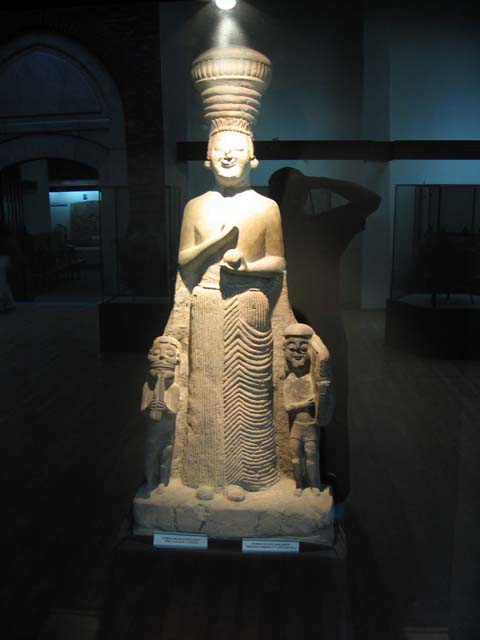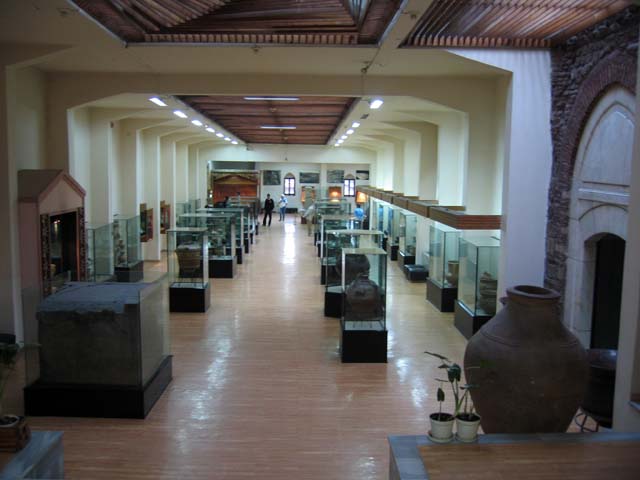|
Turkey's most outstanding museum occupies two renovated Ottoman-era buildings and is situated in the Atpazan (horse market) district of the city. It was awarded the European Museum of the Year Award in 1997.
There ya go. Read all about the museum.
We visited on a gently rainy day -- really our first and only wet weather of the trip -- and we learned a great deal about the history of the area.
These frescoes date from the 6th Millennium B.C., which means they're about 7,500 years old.
I never figured out how the archaeologists managed to chip the frescoes off whatever wall they were painted on, and transport them to this museum in such good condition.
The frescoes are painted plaster.
And they're in remarkably good condition.
They're from the Neolithic Period
This statuette of the Mother Goddess is from Çatalhöyük, a Neolithic settlement near Konya. Some say the goddess is giving birth, while others disagree. Still, she looks awfully fertile to me.
This is a fresco of an ox hunt from Çatalhöyük. Sixth Century B.C.
Mete and Robin view a belt made of gold.
This is a Hittite relief. Looks like somebody's in the process of being trampled by a horse and run over by a chariot.
More Hittite reliefs.
So many, in fact, that the sheer numbers seemed overwhelming.
You could just reach out and touch artwork thousands of years old.
Are those guys grinning at us?
Maybe they're grinning at the lion.
There's the lion in his natural habitat.
There were hallways after hallways of incredible art from the past.
Pottery.
More pottery. Is that a piggy bank down there?
This is a bull statuette, made of bronze, from the royal tombs at Alacahöyük, dating from the second half of the 3rd millennium B.C. There is evidence from other finds that statuettes of bulls and stags were cult objects representing deities. This statuette must have been carried as a standard in religious processions.
That sun-like object on the top shelf is a ceremonial standard made of bronze. It's also from Alacahöyük, and it dates from the second half of the 3rd millenium BC.
Still more pottery
This piece of pottery is naughty.
There. That illustration on top. That's what I'm talking about.
But this is just an innocent pair of bulls. I think.
But he does have a funny look in his eye.
This is a serving table found at Gordion in the Tomb of King Midas, which we haven't visited yet. The table doesn't look a bit golden, though. Interesting.
And there's a proud papa with two little ones.
Hallway after hallway. This was an excellent museum.
|

